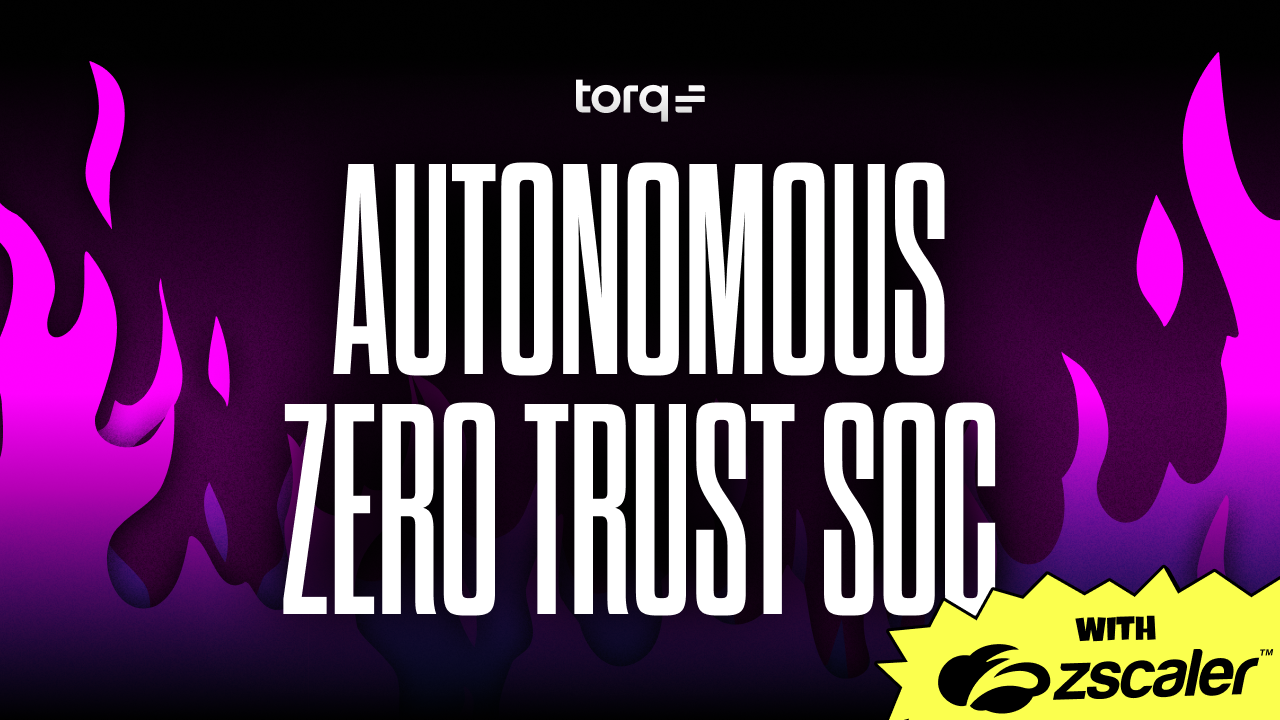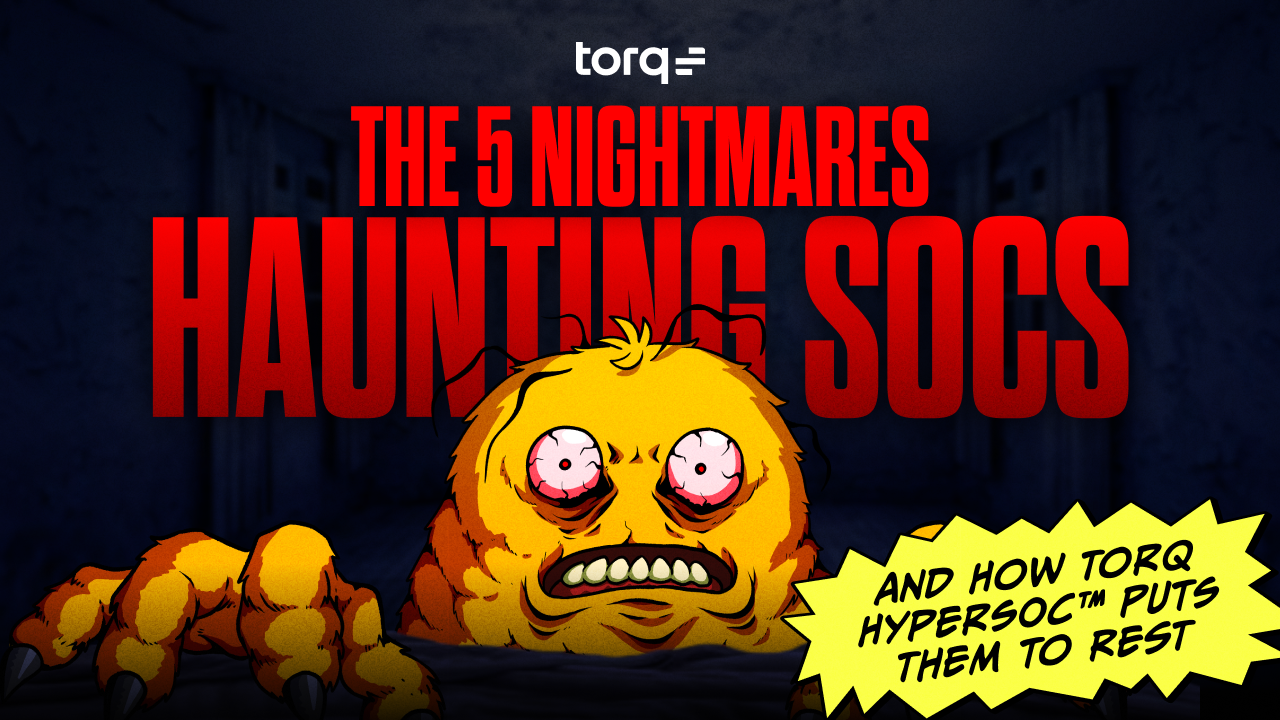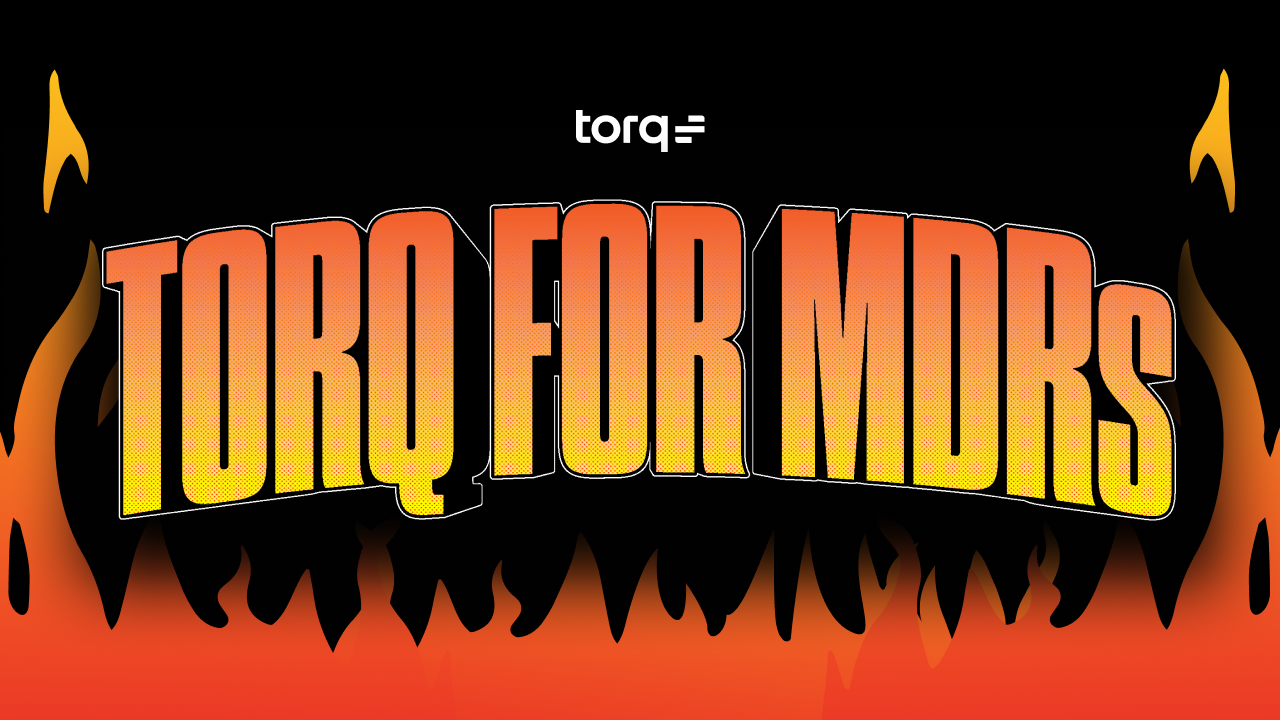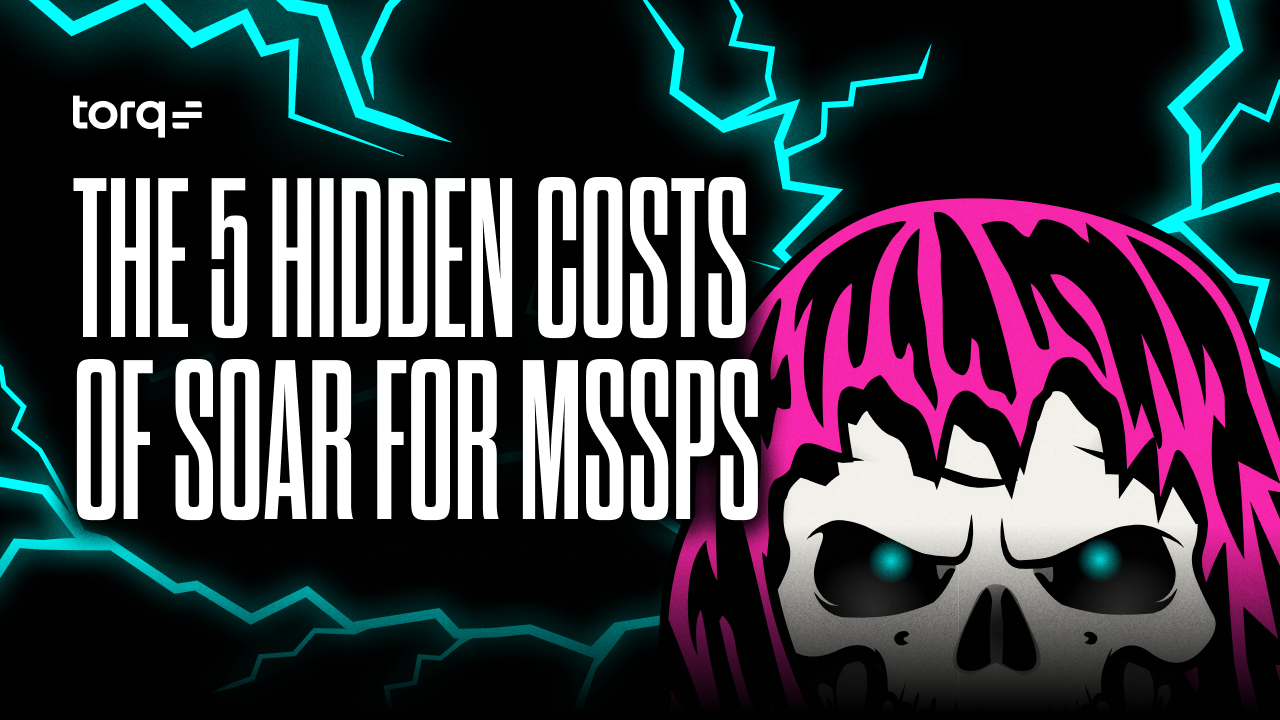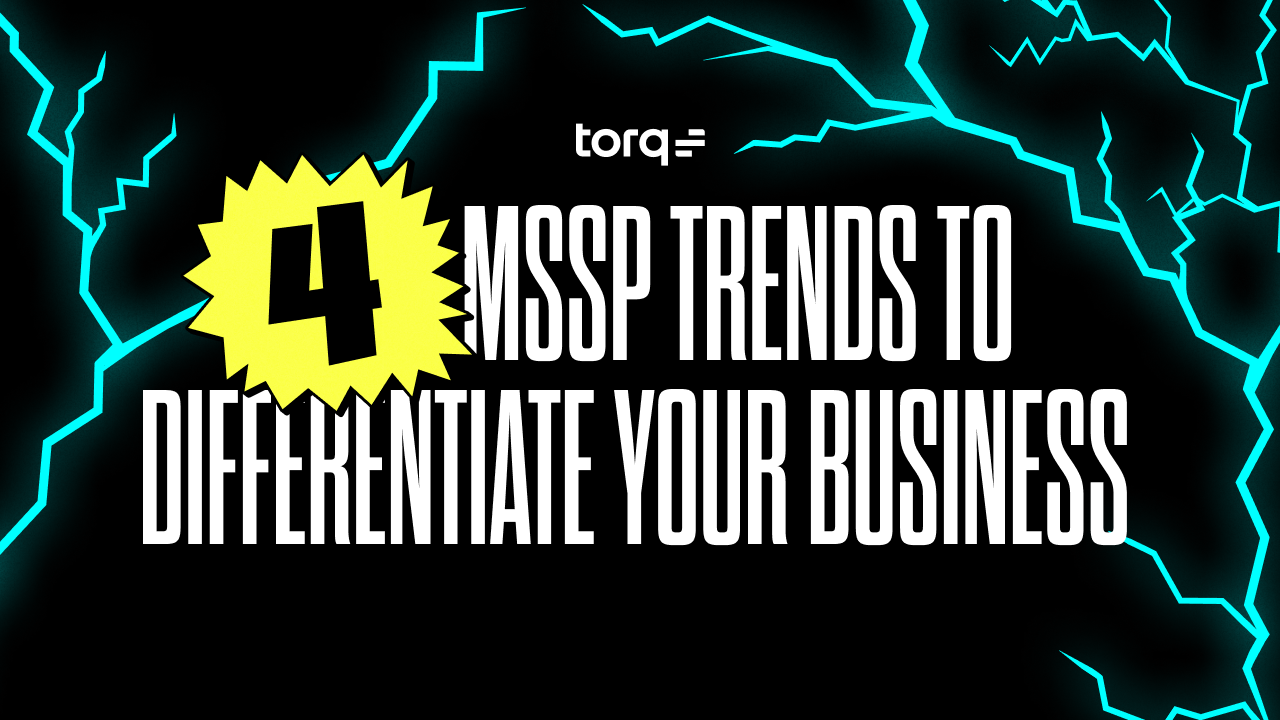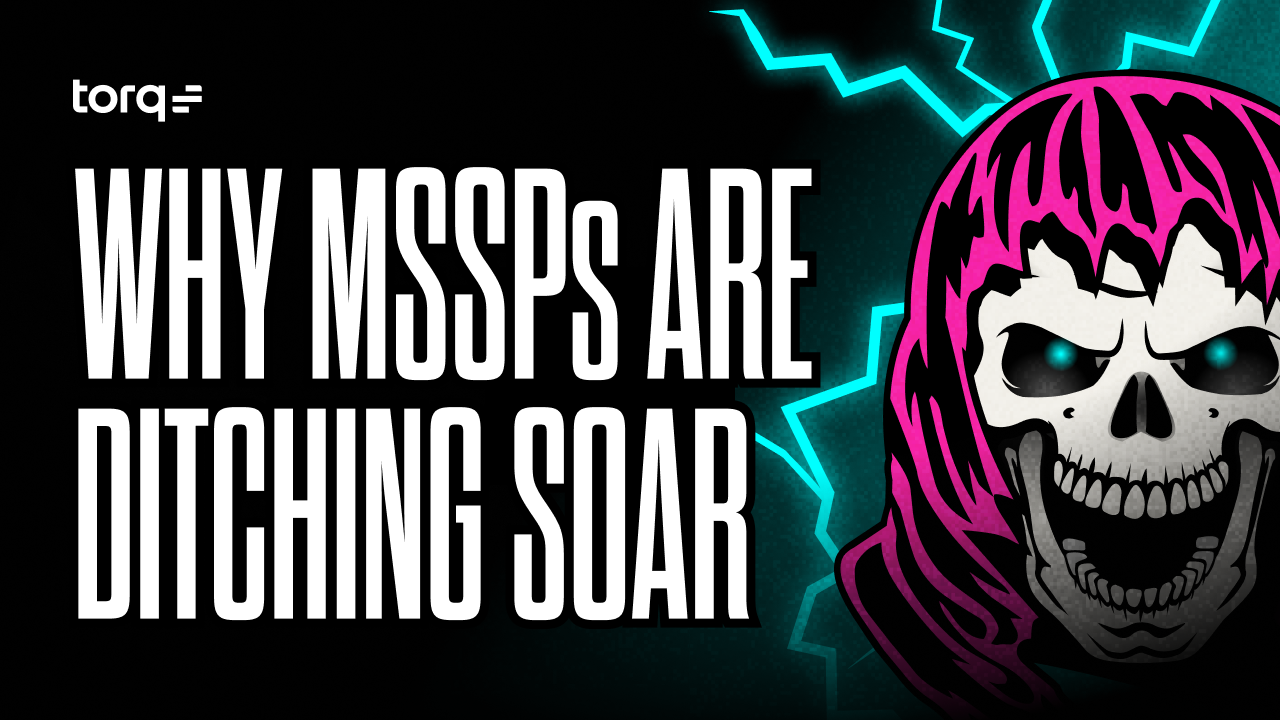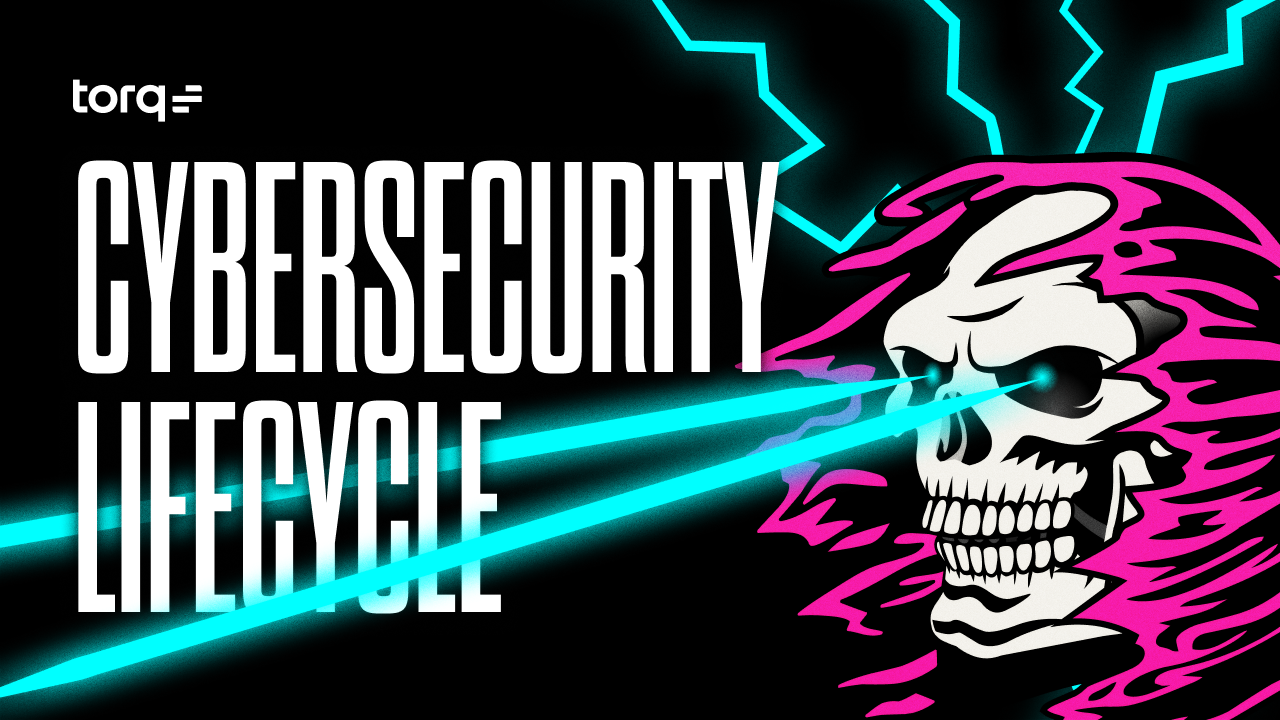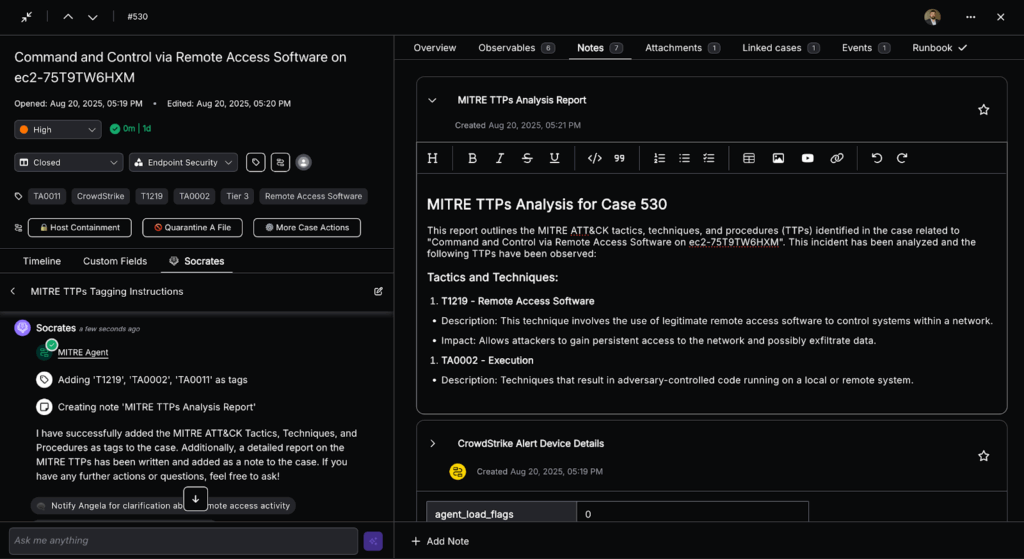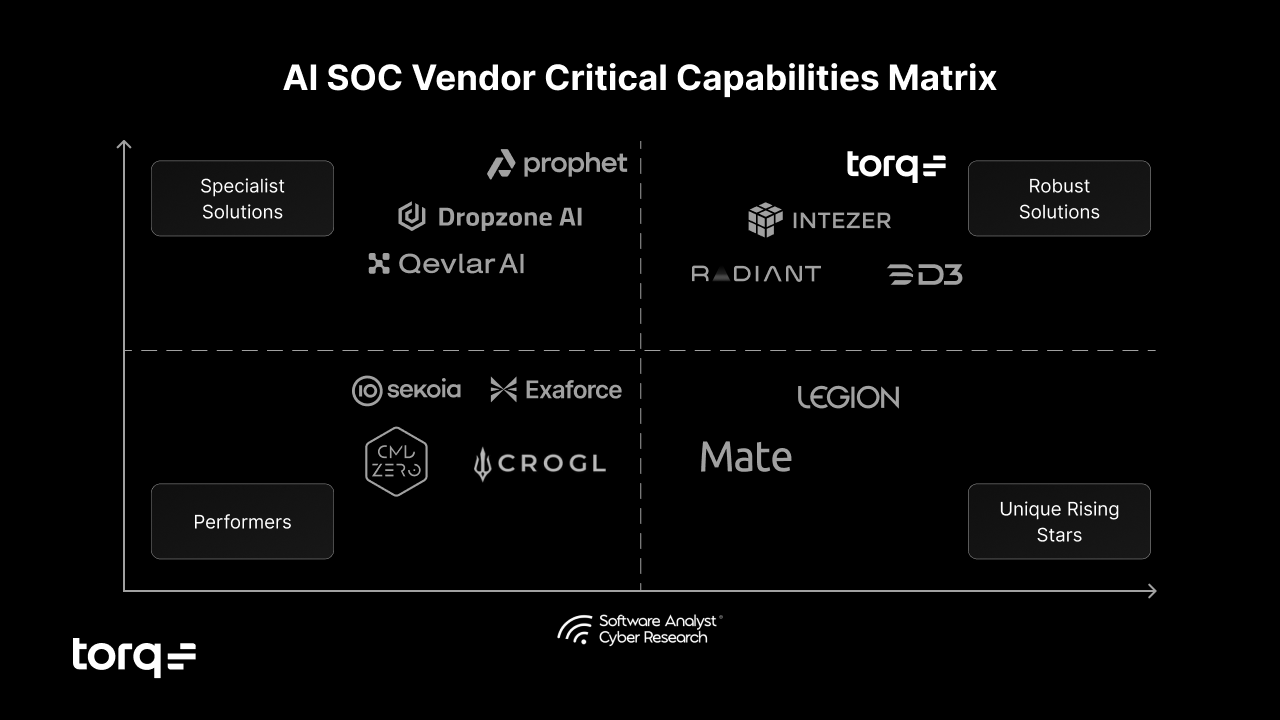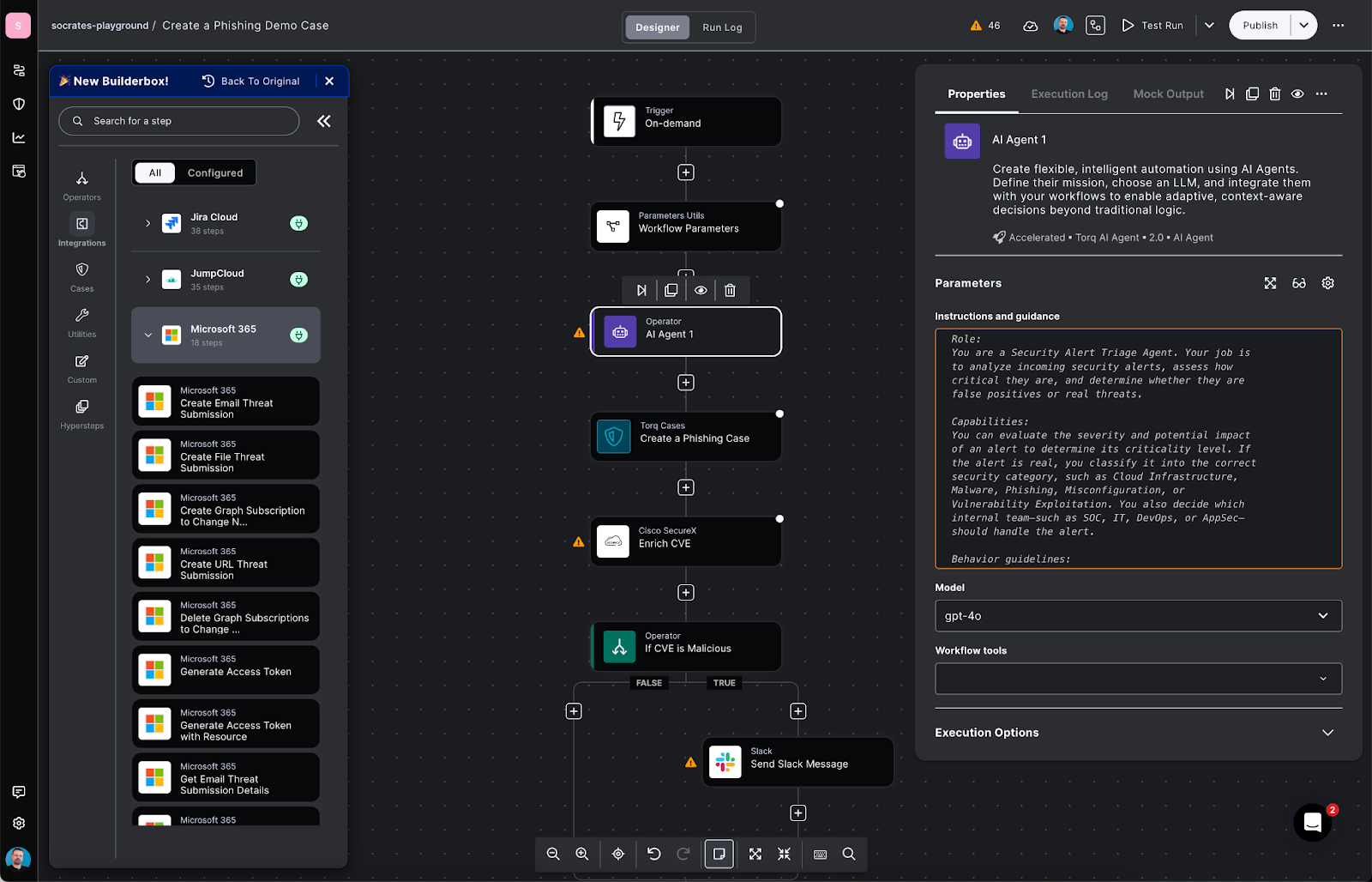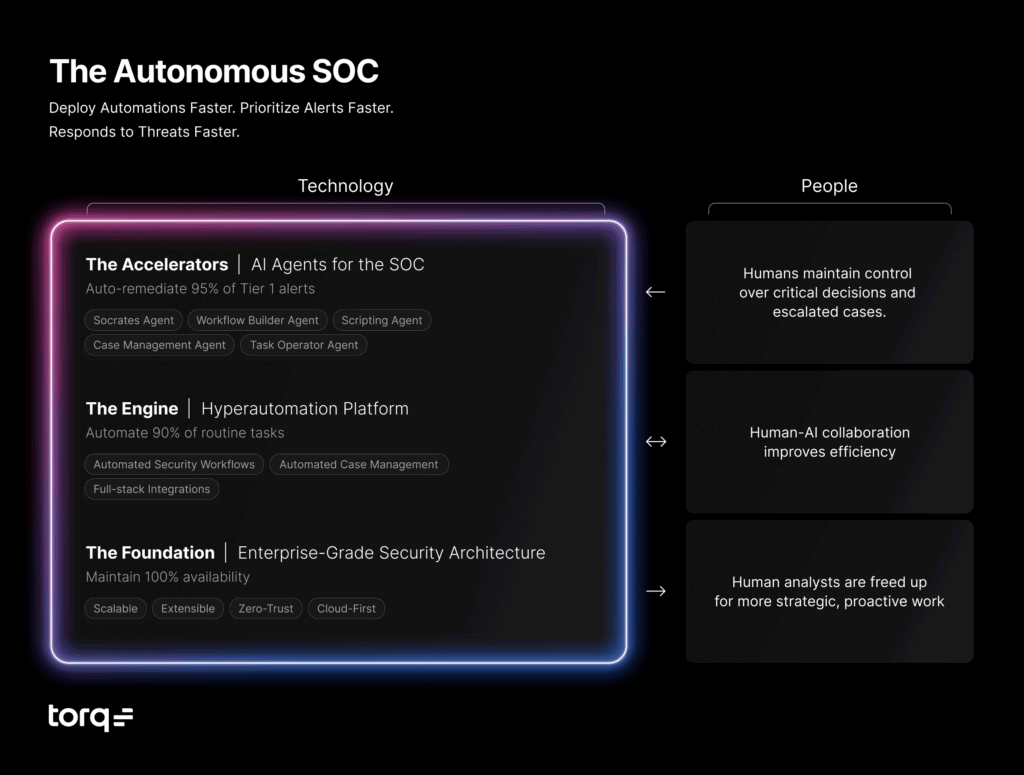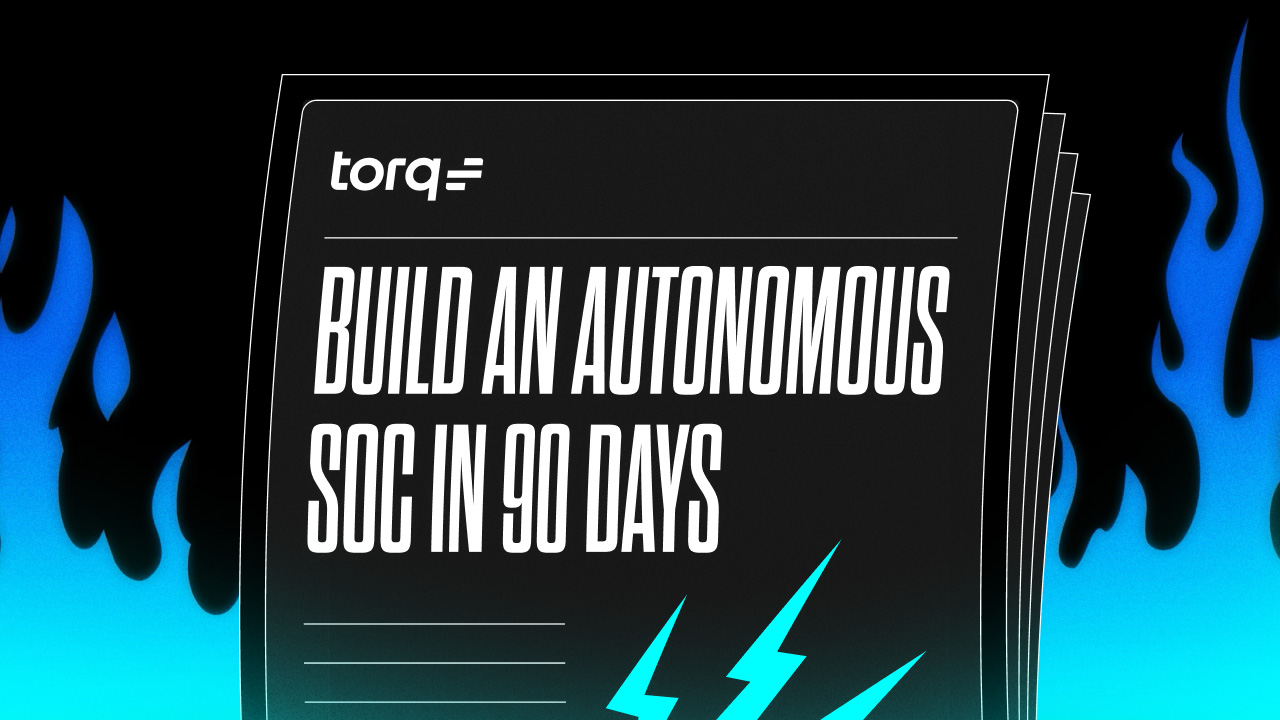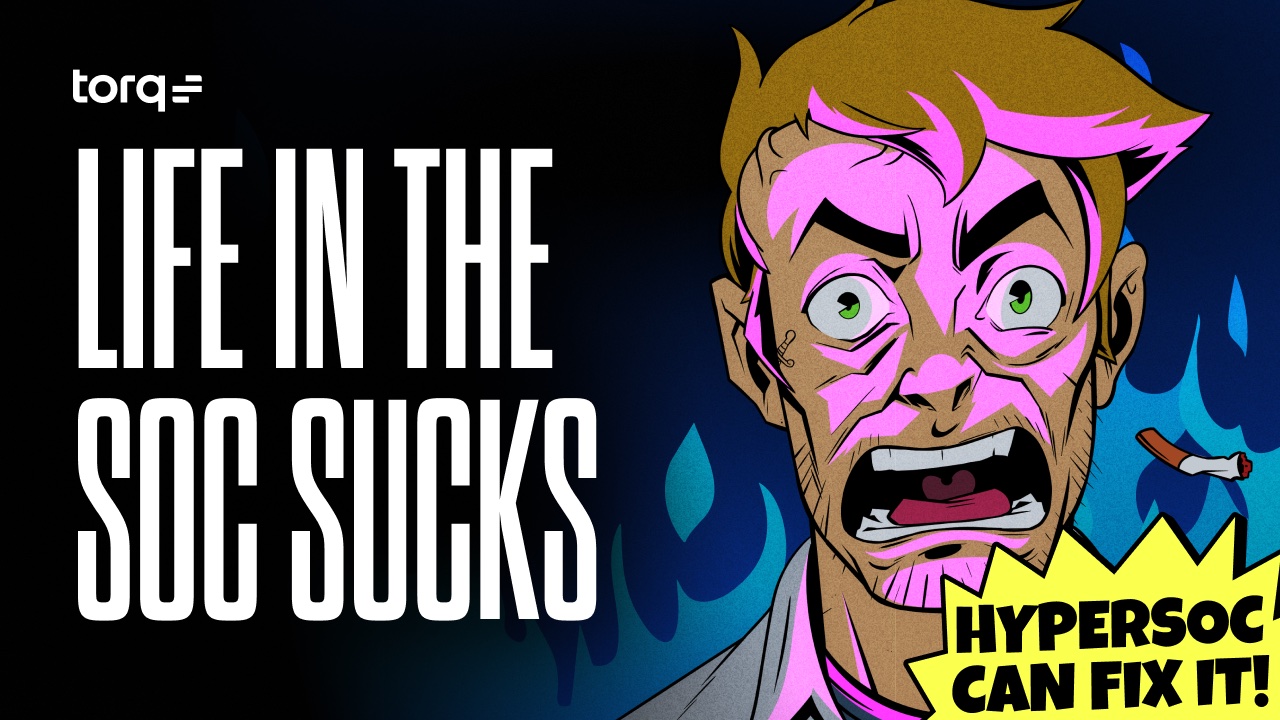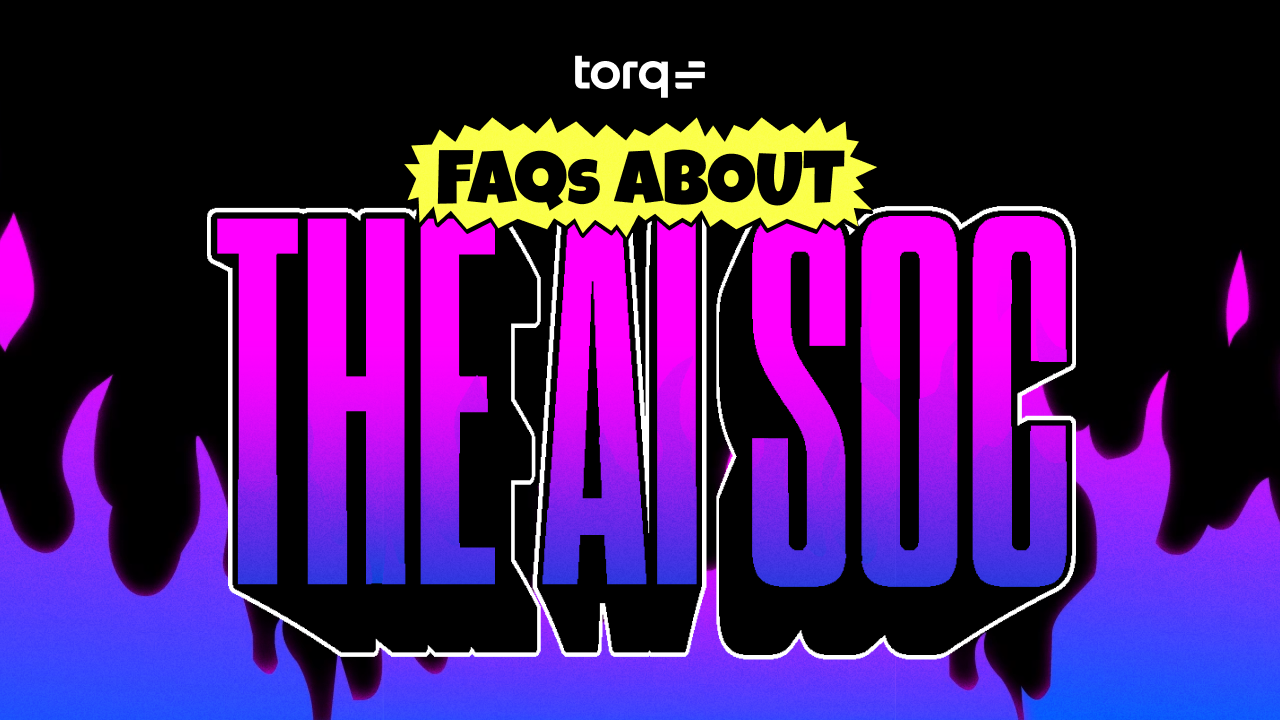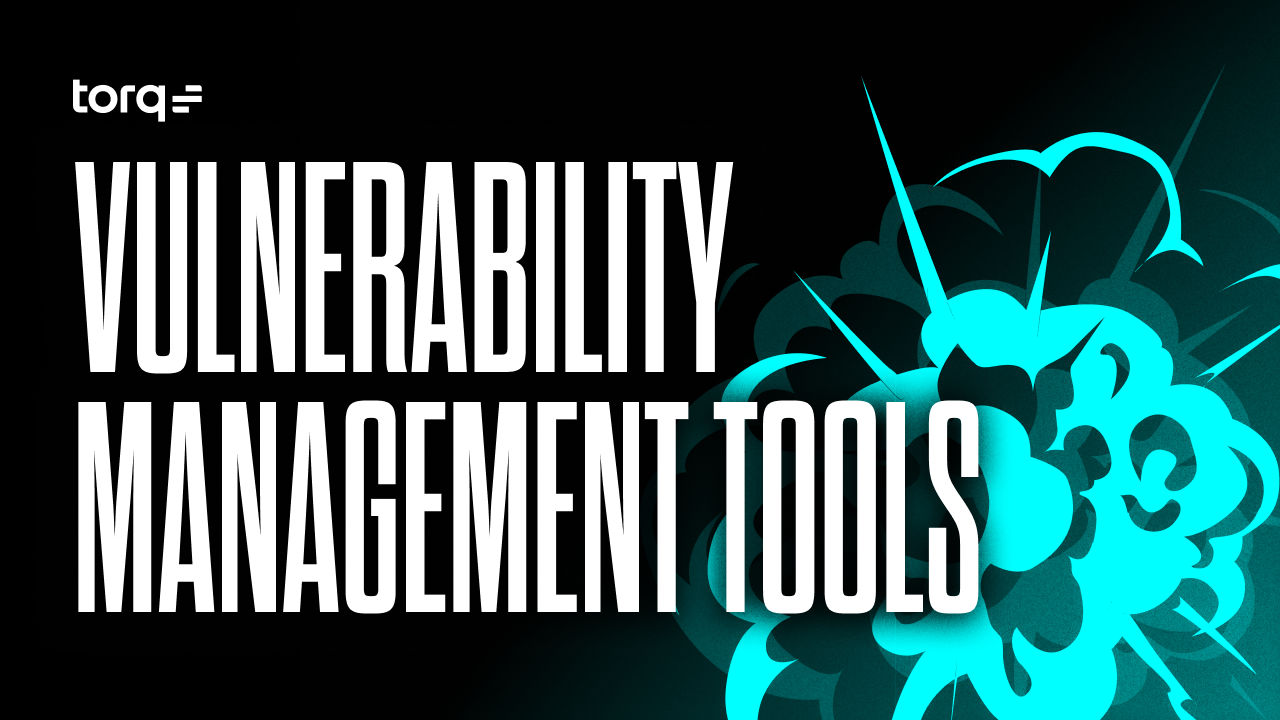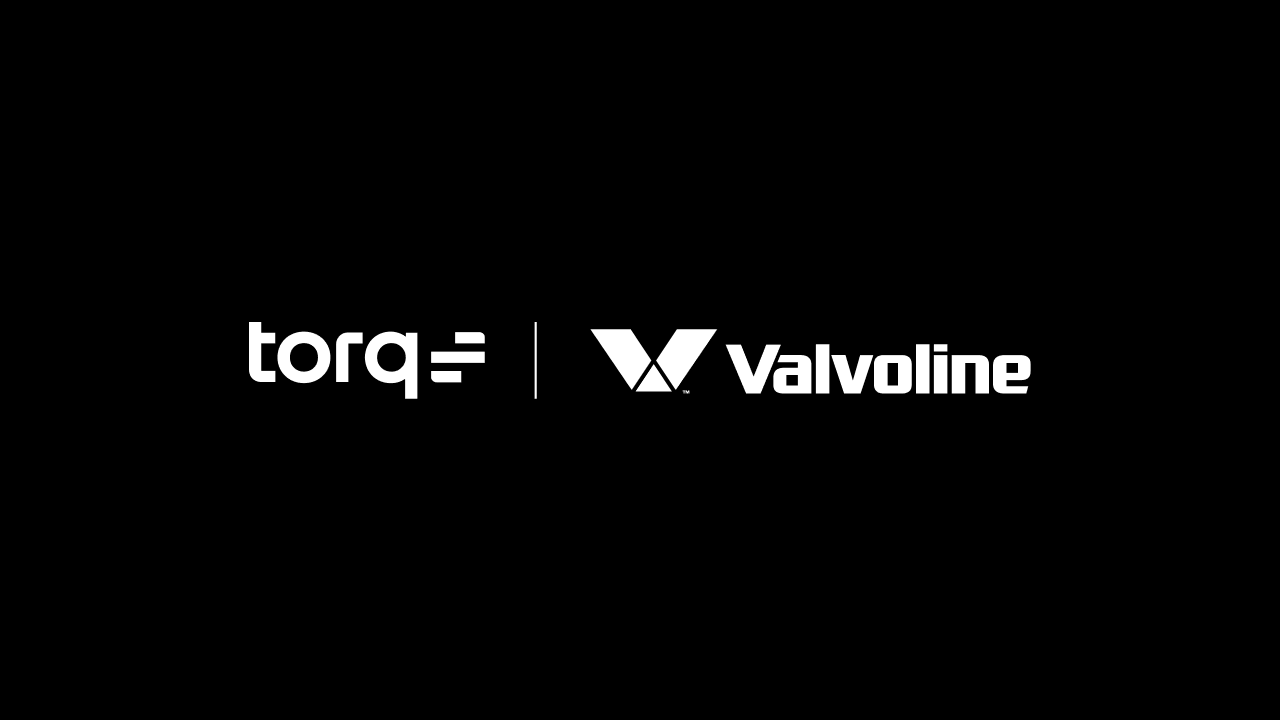Contents
Get a Personalized Demo
See how Torq harnesses AI in your SOC to detect, prioritize, and respond to threats faster.
For years, SIEM, SOAR, and XDR have defined enterprise security operations. Each played a critical role — SIEM aggregates and analyzes logs for visibility, SOAR automates repetitive tasks, and XDR expands detection across EDR, identity, and cloud-based environments. Yet even together, these platforms could not keep pace with the complexity, scale, and speed of today’s cybersecurity landscape.
That’s where Torq HyperSOCTM comes in. Rather than choosing between XDR + SOAR or XDR + SIEM, HyperSOC integrates detection, automation, workflow orchestration, and response in one unified platform.
What is XDR?
XDR (Extended Detection and Response) is the next evolution of endpoint detection — expanding visibility across the full attack surface: endpoints, network, identity, email, and cloud. It unifies telemetry from multiple layers of the security stack to detect, investigate, and respond to threats faster and with greater context.
Unlike traditional SOC tools that focus on one domain, XDR delivers:
- Unified detection across multiple data sources, reducing silos and blind spots
- Correlated insights that connect related alerts into a single incident view
- Built-in response capabilities that can isolate hosts, block users, or terminate malicious processes automatically
In a modern SOC, XDR acts as the detection and investigation backbone. It’s where raw telemetry becomes actionable threat intelligence. But while XDR accelerates detection, it’s not a complete automation or case management system. It doesn’t orchestrate multi-tool workflows, enforce process consistency, or manage complex investigations at scale.
What is SIEM?
SIEM (Security Information and Event Management) was built for a world before cloud scale and real-time automation. It centralizes security data — collecting logs, normalizing events, and correlating alerts from across the environment.
For most enterprises, SIEM tools remain the system of record for:
- Log management and retention for compliance and audits
- Forensic investigations that require long-term data lookback
- Correlation and reporting across endpoints, networks, and applications
While essential for visibility, SIEM wasn’t designed for real-time incident response. As infrastructures grow across hybrid and cloud-based environments, SIEMs often struggle with data volume, latency, and cost. They tell you what happened, but not what’s happening now — and certainly not how to stop it in time.
What is SOAR? (And Why It’s Dead)
SOAR (Security Orchestration, Automation, and Response) emerged as the bridge between detection and response. Its promise was simple: connect all your tools, codify your workflows, and automate repetitive tasks. For a while, it worked — until it didn’t.
Traditional SOAR tools were built on rigid, playbook-based architectures that required extensive scripting, constant upkeep, and deep technical expertise. They automated steps, but not logic. They could move faster, but not think faster.
In practice, legacy SOAR platforms:
- Demand months of configuration before delivering value
- Break whenever tools, APIs, or workflows change
- Struggle to scale across hybrid, multi-tenant environments
- Still rely on humans for contextual decisions — defeating their purpose
That’s why SOAR is effectively dead and is being replaced by adaptive systems like HyperSOC™, where automation evolves into SOC autonomy.
XDR vs. SIEM vs. SOAR: Key Differences
| Capability | XDR | SIEM | SOAR |
|---|---|---|---|
| Primary Purpose | Unified detection and incident response across endpoints, network, identity, and cloud | Centralized log collection, normalization, and correlation for visibility and compliance | Workflow orchestration and automation of incident response processes |
| Core Strength | Cross-domain detection and automated containment | Long-term storage, analytics, and audit visibility | Automating multi-tool workflows and manual tasks |
| Data Sources | Endpoint, network, cloud, identity, email | Logs from across infrastructure, apps, and security tools | Alerts and data ingested from SIEM, XDR, EDR, and ITSM systems |
| Detection Coverage | Real-time, multi-vector threat correlation | Depends on rule-based correlation and analyst queries | No native detection — acts on alerts from other tools |
| Response Capability | Built-in, automated response (isolation, blocking, quarantine) | Minimal — requires external integration | Scripted responses via playbooks and predefined automations |
| Automation Approach | Integrated and adaptive automation within the platform | Manual or rule-based workflows | Predefined playbooks, often complex to maintain |
| Scalability & Maintenance | High — cloud-native and adaptive | Heavy data storage and tuning required | High maintenance and scripting overhead |
| Human Interaction | Guided investigation with analyst-assisted decisioning | Heavy analyst involvement for correlation and query | Requires frequent human oversight and playbook upkeep |
| Ideal Use Case | Real-time detection, automated response, and rapid containment | Compliance, audit logging, and forensic investigation | Process automation, escalation, and workflow coordination |
| Key Limitation | Limited case management and orchestration | Lacks real-time detection and automation | Lacks intelligence, adaptive reasoning, and scalability |
Each platform plays a role — but none unifies detection, automation, case management, and AI-driven reasoning into one system.
That’s what Torq HyperSOC™ delivers:
- The real-time visibility of XDR
- The historical depth of SIEM
- The orchestration power of SOAR — all fused into a single, autonomous security operations platform
Why SIEM, XDR, and SOAR Alone Are No Longer Enough for the Modern SOC
For years, SIEM, SOAR, and, more recently XDR have defined the core of enterprise security operations. Each brought major advances: SIEM centralized visibility, SOAR automated repetitive tasks, and XDR unified detection across multiple domains. But as modern threats evolve faster than teams can respond, even these tools — alone or combined — can’t keep up with the scale, complexity, and speed today’s SOC demands.
The Limits of SIEM: Visibility Without Velocity
Traditional SIEM solutions provide long-term data correlation and compliance reporting, but they struggle with real-time incident response. Designed for static infrastructures, many SIEM tools can’t efficiently analyze or aggregate high-volume telemetry from hybrid and multi-cloud environments. This latency leads to missed detections and delayed response times, leaving gaps that attackers can exploit.
While SIEM remains invaluable for use cases like compliance and forensics, it wasn’t built to detect or prioritize critical threats in real time. Modern SOCs need more than historical context — they need the ability to act on threat intelligence instantly.
The Limits of SOAR: Automation Without Adaptability
SOAR emerged to automate workflows and streamline incident response, but its capabilities often stop short of full adaptability. Traditional SOAR systems depend on predefined playbooks that require constant upkeep, deep scripting expertise, and manual maintenance. As tools, APIs, and processes evolve, these brittle automations break — increasing cost and reducing efficiency.
As a result, SOCs spend more time managing playbooks than mitigating suspicious or malicious activity. Legacy SOAR can improve workflow automation, but it cannot identify, adapt, and learn from new attack patterns or context across multiple data sources.
The Limits of XDR: Detection Without Orchestration
XDR advanced detection by combining EDR, network, identity, and cloud telemetry into a single analysis layer. It’s powerful at correlating threat intelligence and reducing false positives, improving both visibility and security posture. However, most XDR systems remain detection-focused — not orchestration-driven.
They excel at recognizing critical indicators and offering insights into attack chains but rely on external systems for investigation, workflow coordination, and containment. Without deep orchestration or automated case management, response still depends on humans.
The Path Forward: From SOC Automation to Autonomy
HyperSOC doesn’t replace SIEM or XDR — it reduces dependency on them by delivering what they can’t: reasoning, orchestration, and real-time decision-making at machine speed. It unifies threat intelligence, incident response, and threat hunting into a single adaptive system that reasons through context, automates decisions, and learns continuously.
Torq HyperSOC:
- Leverages SIEM for historical data while automating detection and correlation in real time
- Integrates with XDR to analyze, detect, and prioritize critical events with AI-driven context
- Surpasses SOAR, replacing static playbooks with dynamic, self-optimizing workflows
The result is a SOC that’s faster, smarter, and self-improving — one built for the threats of today and tomorrow.
Introducing HyperSOC: The Future of SOC Autonomy
Friendly to your existing stack (XDR, SIEM, or SOAR), Torq HyperSOC is built for tomorrow’s SOC. It’s the connective layer that turns detection into decision, and decision into action — instantly, intelligently, and at scale.
What it delivers:
- Agentic AI: HyperSOC reasons through context, adapts to new signals, and evolves with every incident — creating a SOC that gets smarter with every case.
- No-code/low-code workflow builder: Build and deploy end-to-end workflows in minutes. HyperSOC’s visual builder eliminates complex scripting, empowering analysts and engineers alike to automate detection, investigation, and response at scale.
- Unified lifecycle: From detection to investigation, response, case management, and audit — HyperSOC brings every stage of the SOC workflow into one cohesive, transparent platform. No handoffs. No silos. No guesswork.
- Scale and speed: Whether handling thousands of alerts a day or managing hundreds of environments, HyperSOC delivers elastic, multi-tenant performance built for global enterprises and MSSPs.
- Leveraging XDR: HyperSOC ingests and correlates cross-domain telemetry from endpoints, networks, cloud, and identity systems, transforming raw XDR detections into full-lifecycle, autonomous response actions.
- More advanced than SOAR: Where traditional SOAR ends, HyperSOC begins. It replaces brittle playbooks with dynamic, context-aware automation that understands intent, drives consistent triage, and integrates native case management.
HyperSOC empowers your team to detect faster, respond autonomously, and scale operations across complexity while maintaining control.
How to Migrate from SOAR to Torq HyperSOC + SIEM + XDR
1. Build Your Migration Plan
Start by auditing your existing SOAR environment: playbooks, integrations, and key processes. Identify what works, what’s broken, and what’s slowing you down. Then, map those workflows to HyperSOC’s automation framework — merging redundant steps, removing manual approvals, and rebuilding for efficiency.
Torq’s team works side-by-side with you through JumpStart, our hands-on enablement program, to design a custom migration roadmap that meets your operational and business goals.
2. Migrate and Modernize Workflows
Don’t copy your old playbooks — rebuild smarter. HyperSOC replaces static, script-heavy automations with dynamic, AI-assisted workflows that are easier to maintain and infinitely more flexible.
- Visual workflow builder: Build and test workflows in real time — without coding.
- AI workflow builder: Create entire automations through natural language prompts.
- Seamless integrations: Connect instantly with 300+ tools, from EDR, XDR, and SIEM to identity and cloud platforms.
This phase is where many teams realize that what took 50 workflows in their old SOAR can now be done in 30 or less — faster, cleaner, and with built-in threat intelligence.
3. Validate and Go Live
Test before you flip the switch. HyperSOC lets you test every step of your automation in a dedicated staging environment, ensuring complete confidence before production rollout.
You can even run both systems in parallel during cutover — minimizing downtime while your SOC transitions to full Hyperautomation. Once validated, you’ll begin decommissioning your legacy SOAR and start measuring real impact: faster MTTR, reduced alert fatigue, and higher analyst capacity.
4. Continue to Work with Your Existing Stack
SIEM + HyperSOC: Your SIEM remains the central hub for log collection, long-term analytics, and compliance. HyperSOC consumes that telemetry in real time, enriching alerts with contextual data from users, assets, and cloud environments. When high-fidelity incidents are detected, HyperSOC automatically triages, investigates, and initiates the appropriate workflow.
XDR + HyperSOC: XDR delivers cross-domain detections across endpoint, network, and cloud. HyperSOC extends that reach by automating correlation, response, and case management — turning XDR signals into full-lifecycle incident handling. Together, they form an adaptive defense system that detects, decides, and responds at machine speed.
Unified Feedback Loop: Every automated action — from isolation to credential revocation — feeds back into your SIEM and XDR. This creates continuous learning, measurable outcomes, and audit-ready visibility across your entire SOC.
5. Scale Autonomy with Agentic AI
Once your core workflows are live, HyperSOC’s AI SOC Analyst, Socrates, and multi-agent system take over the heavy lifting. These AI Agents continuously triage, enrich, and resolve incidents — learning from every case. Analysts move from chasing alerts to supervising intelligent, explainable automation.
“Transitioning to Torq was smooth. Torq’s speed and flexibility allowed us to migrate and optimize our workflows quickly and their support team was instrumental in ensuring a seamless migration.”
– SOC manager, leading security company
Measuring ROI of HyperSOC Adoption
Adopting Torq HyperSOC™ is a measurable business transformation. Here’s how security teams quantify the impact:
- Operational efficiency: Dramatically shorter triage cycles, fewer escalations, and near-zero manual handoffs. What once took hours now happens in seconds.
- Cost optimization: Retire legacy SOAR tools, reduce maintenance overhead, and lower the analyst-to-alert ratio without sacrificing coverage.
- Enhanced security posture: Broader detection visibility, faster containment, and reduced dwell time lead to measurable risk reduction across every environment.
- Analyst empowerment: Teams spend less time on repetitive tasks and more time investigating complex threats, driving higher morale, engagement, and retention.
- Business visibility: HyperSOC turns SOC performance into business impact— tracking automation rates, containment speed, and incident volume trends that tie directly to operational resilience and ROI.
The Future Isn’t XDR vs. SOAR — It’s HyperSOC
For years, security teams have been forced to choose: XDR for detection, SOAR for automation, SIEM for visibility. But that model no longer fits the scale, speed, or sophistication of modern threats. Attackers have evolved — your SOC must too.
Torq HyperSOC™ ends the debate. It unifies detection, investigation, automation, and response into a single, intelligent system — working seamlessly with your existing SIEM and XDR to deliver real-time, autonomous defense. HyperSOC doesn’t just automate; it reasons, adapts, and acts — turning every signal into a complete, auditable response.
See how HyperSOC transforms your SOC from reactive to autonomous — and redefines what’s possible in security operations. Get your copy of the Don’t Die. Get Torq manifesto.
FAQs
SIEM (Security Information and Event Management) and SOAR (Security Orchestration, Automation, and Response) play complementary but distinct roles.
- SIEM collects and normalizes logs for visibility, compliance, and historical analysis.
- SOAR acts on that data to automate incident response workflows and orchestrate actions across tools.
But modern SOCs often replace SOAR with HyperSOC and integrate their SIEM into automated responses with Torq, which includes logging, detection, automation, and response in one unified platform.
XDR and SIEM both handle threat data, but they differ in real-time intelligence and automation:
- SIEM aggregates and correlates logs, offering long-term data storage and compliance reporting. It’s built for visibility, not speed.
- XDR is focused on active, real-time detection and response, correlating data across multiple security layers to identify and contain threats instantly. In practice, SIEM tells you what happened, while XDR helps stop it as it happens.
Torq HyperSOC integrates with both, combining SIEM’s visibility and XDR’s intelligence with fully automated workflows for end-to-end defense.
No — XDR doesn’t replace SOAR, but it does overlap in specific detection and response capabilities. XDR (Extended Detection and Response) focuses on data correlation and automated response across endpoints, networks, and cloud environments. It unifies visibility and detection.
On the other hand, SOAR (Security Orchestration, Automation, and Response) is designed for workflow orchestration — connecting multiple tools and automating manual steps across the SOC. The strongest security environments combine both: XDR for detection and HyperSOC as a SOAR replacement for orchestration and response. Torq unifies these functions into one adaptive, AI-driven system.
Traditional SOAR tools are complex to integrate. They require manual scripting, API maintenance, and constant playbook updates. Every new tool or process adds friction. XDR platforms are typically easier to deploy, with native integrations and prebuilt data pipelines for faster time to value. HyperSOC bridges this gap, offering SOAR flexibility without upkeep. It connects seamlessly to your XDR, SIEM, IAM, and cloud tools through no-code or low-code workflows that scale effortlessly.
HyperSOC goes beyond the traditional limits of XDR and SOAR by unifying detection, automation, orchestration, and case management in one platform — powered by agentic AI.
- Unlike XDR, which focuses mainly on detection and analytics across endpoints, networks, and clouds, HyperSOC adds full-lifecycle automation — triage, investigation, containment, and remediation — all without manual intervention.
- Unlike SOAR, which relies on static playbooks and heavy scripting, HyperSOC uses dynamic, AI-driven workflows that adapt to real-time context.
- Unlike both, HyperSOC continuously learns from every incident, optimizing future responses through intelligent feedback loops.
HyperSOC merges XDR’s visibility, SOAR orchestration, and AI’s adaptability — creating an autonomous, self-improving SOC built for scale, speed, and resilience.

